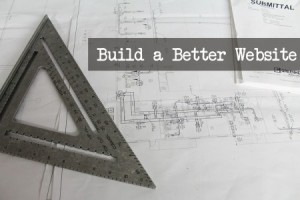— August 3, 2018

If you have participated in any conversations about design, you’ve likely encountered the term white space. Likelier still, you’ve heard a designer talk about white space in a positive way. And if you are like me, you have heard the non-designers in the room talk about white space in a completely different way, viewing it as ample opportunity to add more text, more imagery, more buttons.
White space is the illusive design element that doesn’t feel like a design element. It exists in the absence of everything else. It is a part of the design, and yet it just feels like empty space the designer forgot to use.
Sometimes these conversations get heated, and turn ugly. Designers don’t like explaining to marketers that white space is a good thing, that white space can help emphasize the elements of the design that you want to emphasize. Marketers think designers are just saying that, like it’s some excuse not to add more to the page/poster/flyer, etc.
So who is right? Is white space a good thing or not? Let’s settle the debate once and for all.
I don’t like to admit this, but in this case, the designer is right. But…(we’ll get back to the “but” later)
Why White Space Matters
White space, which is actually a common practice in a variety of arts, actually derives its name from graphic design, when everything used to be printed on white paper. But actually, white space doesn’t have to be white. It can be any color.
White space is simply blank space in and around the design. And it serves as a background, a buffer zone, a separation of individual elements, calling attention to the things in the design that you want people to see when they look at it.
We all know what the absence of white space looks like when we see it. It’s the old coupon flyers that people carry around the grocery store, and the original homepage design on Amazon.com, and a million other things that are so cluttered they are tough to look at.
And that is why white space matters. Because it makes the design more pleasing to the eyes. It keeps things clean and directs the eye.
Good designers know how to use white space to their advantage. They know that when the rest of us look at something, we’re not thinking, “oh, what great use of white space”. But we like what we see, even if we don’t know why.
What About that “But”?
There’s always a “but”. And that’s because some designers fall in love with white space. Just because it is an important design element, doesn’t mean it should be overused. If you overuse anything, it becomes a problem.
In an effort to simplify, designers cut and cut and cut, until the message gets lost in an attempt to emphasize just one element at the expense of every other.
Just like anything else, designs should be tested and adjusted in the real world.
Digital & Social Articles on Business 2 Community
(56)
Report Post







